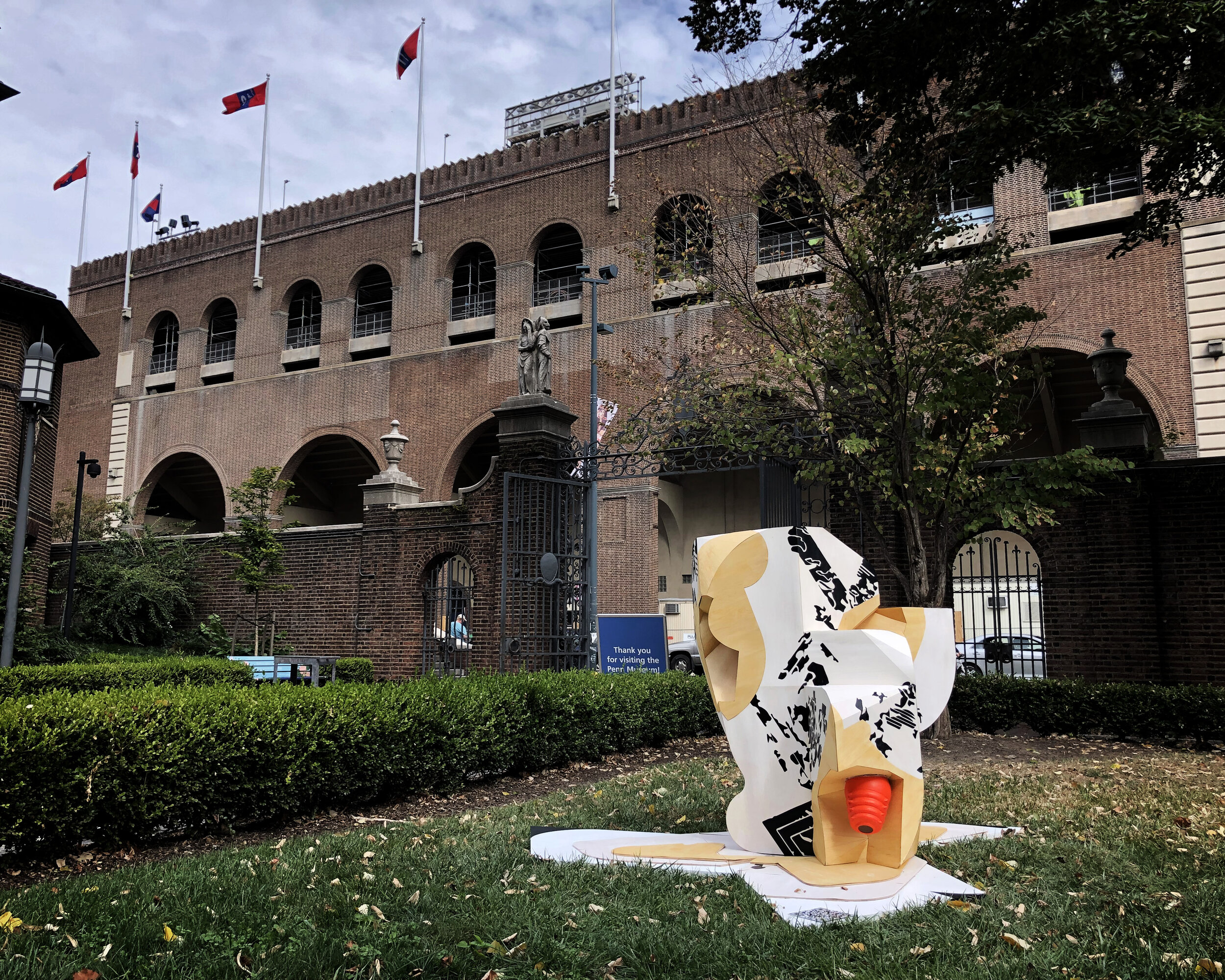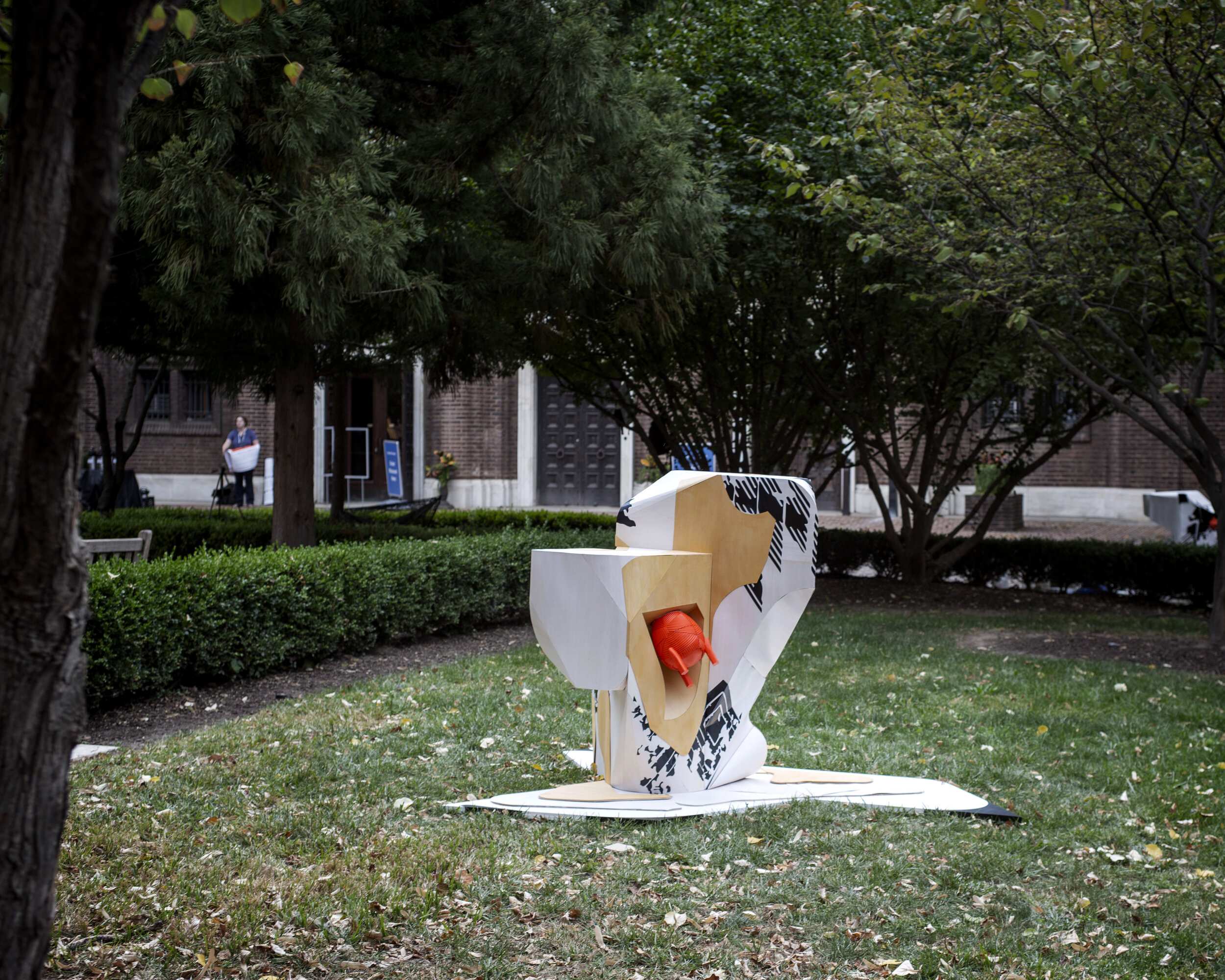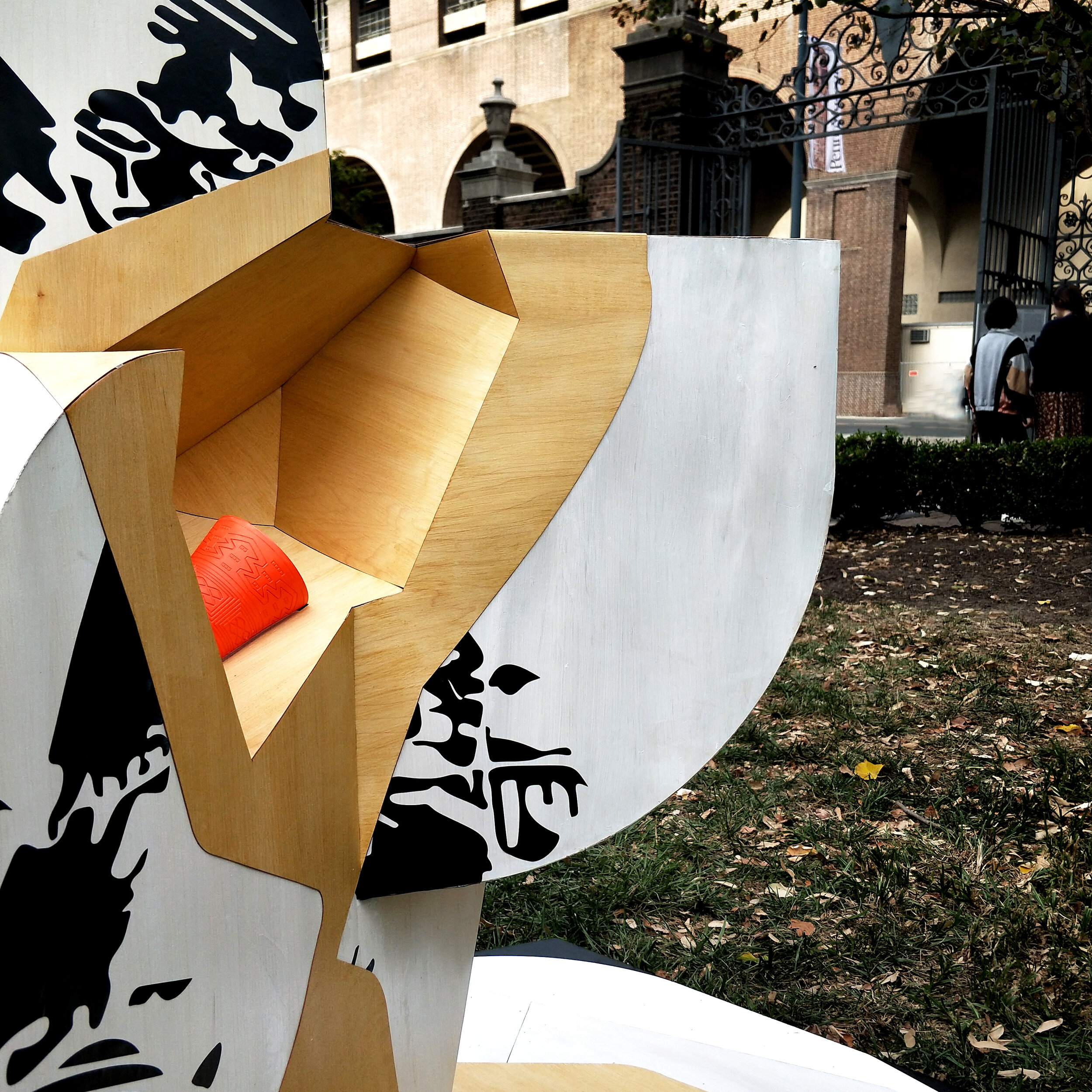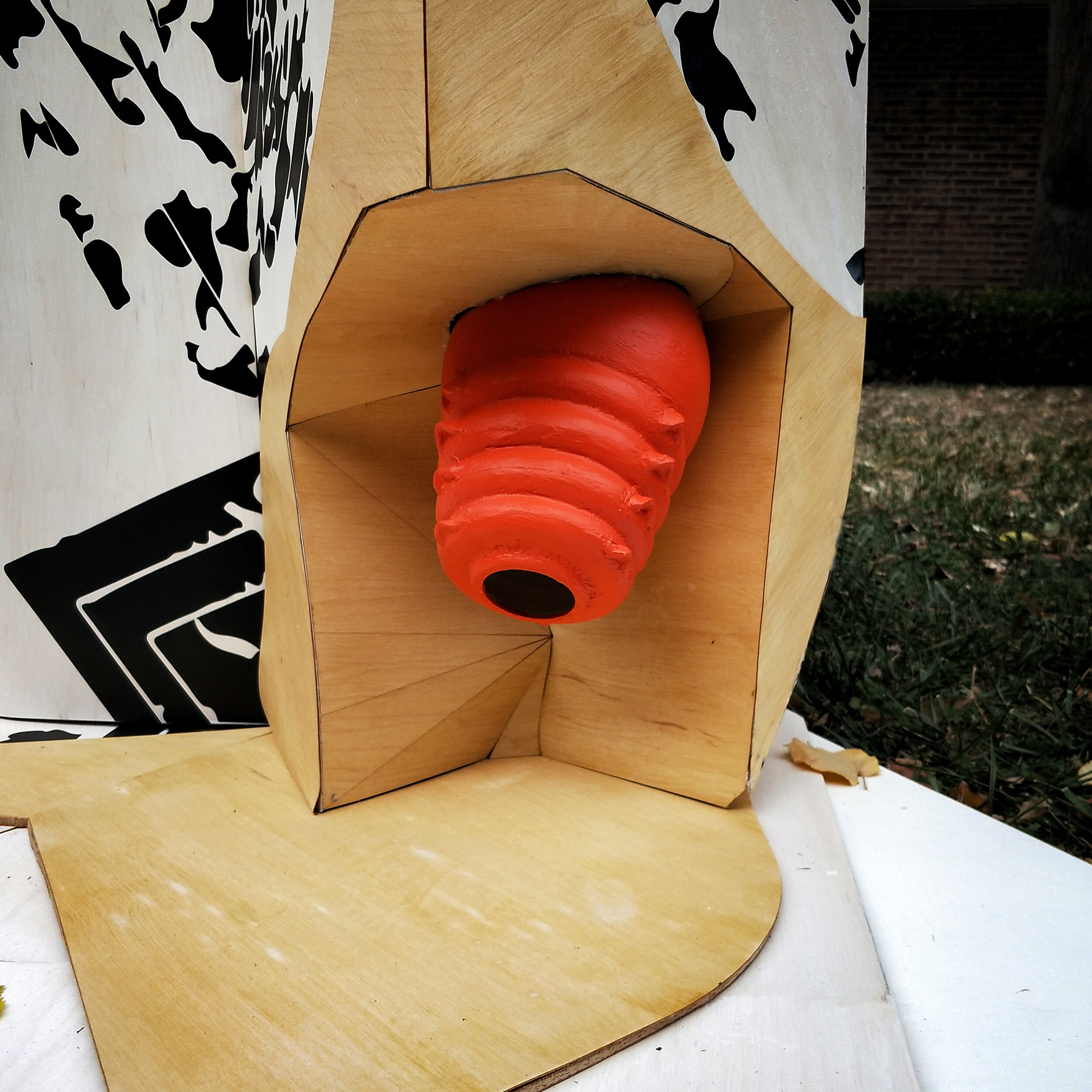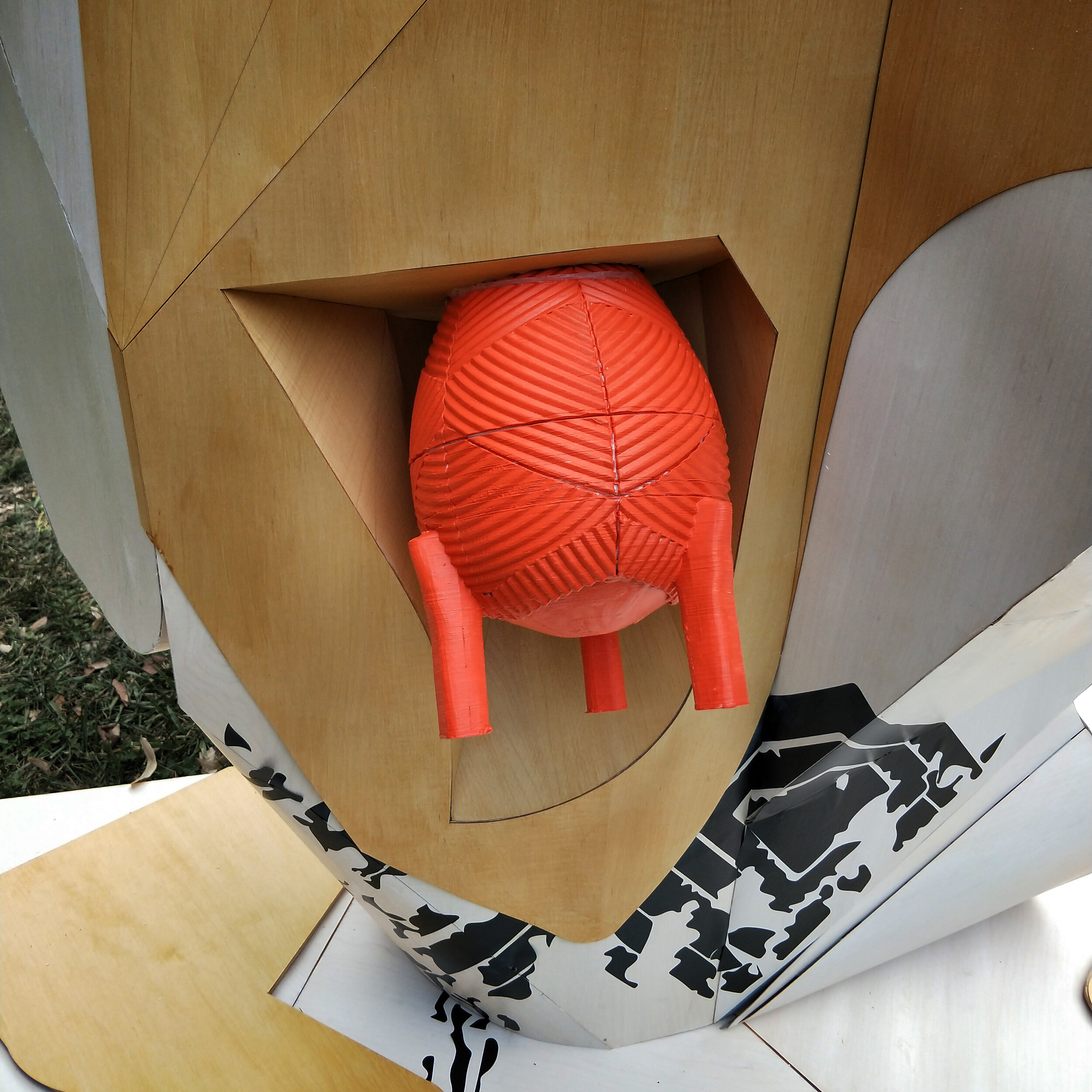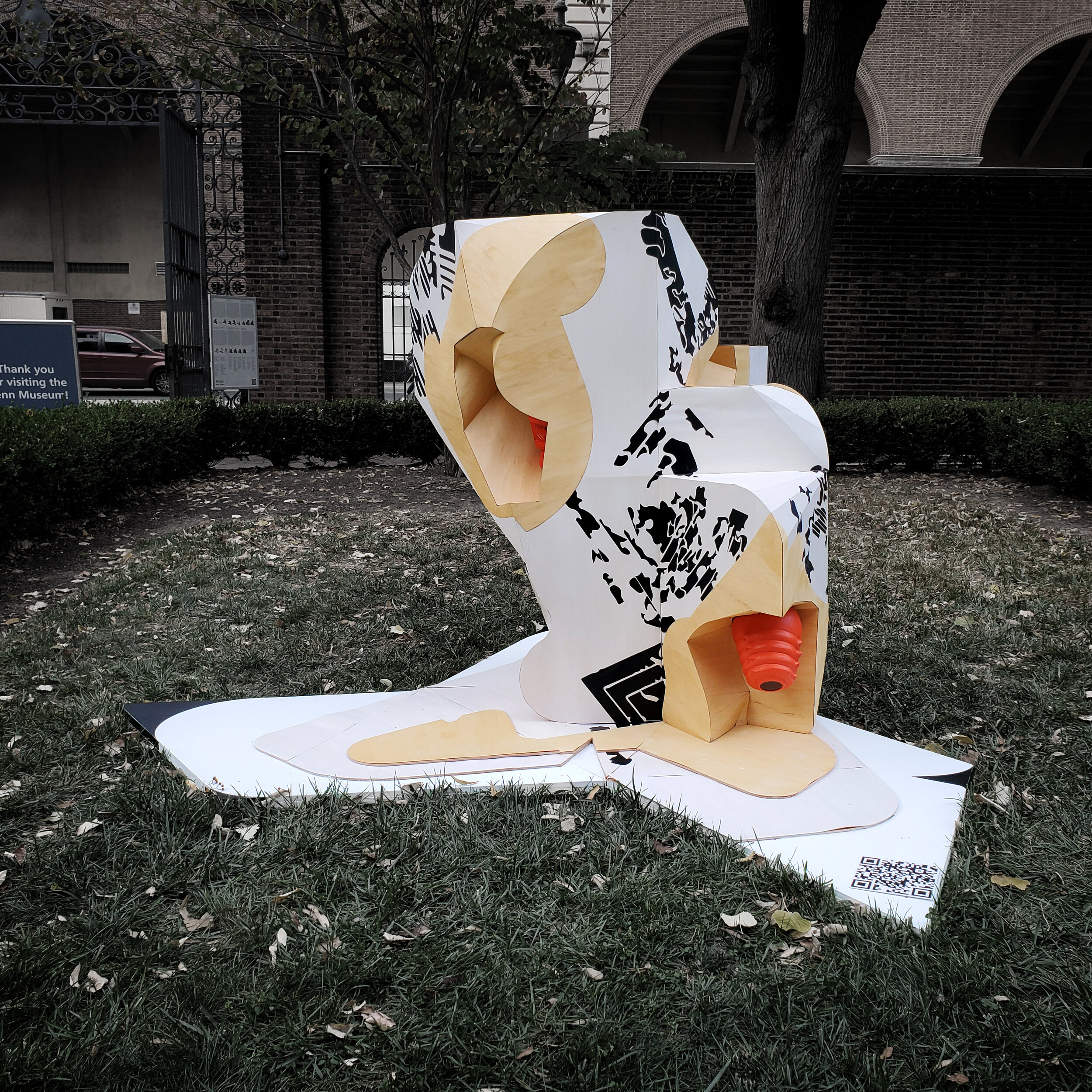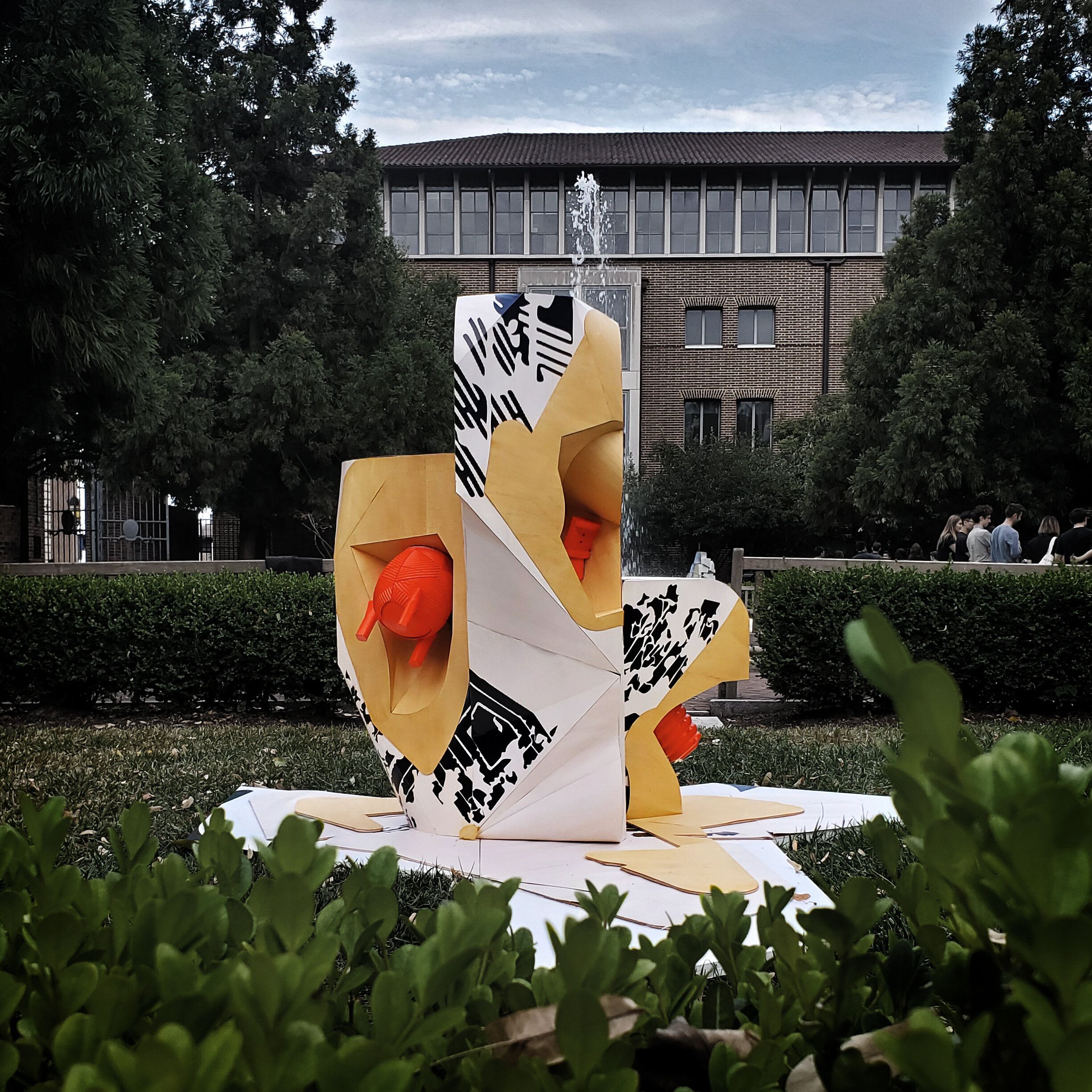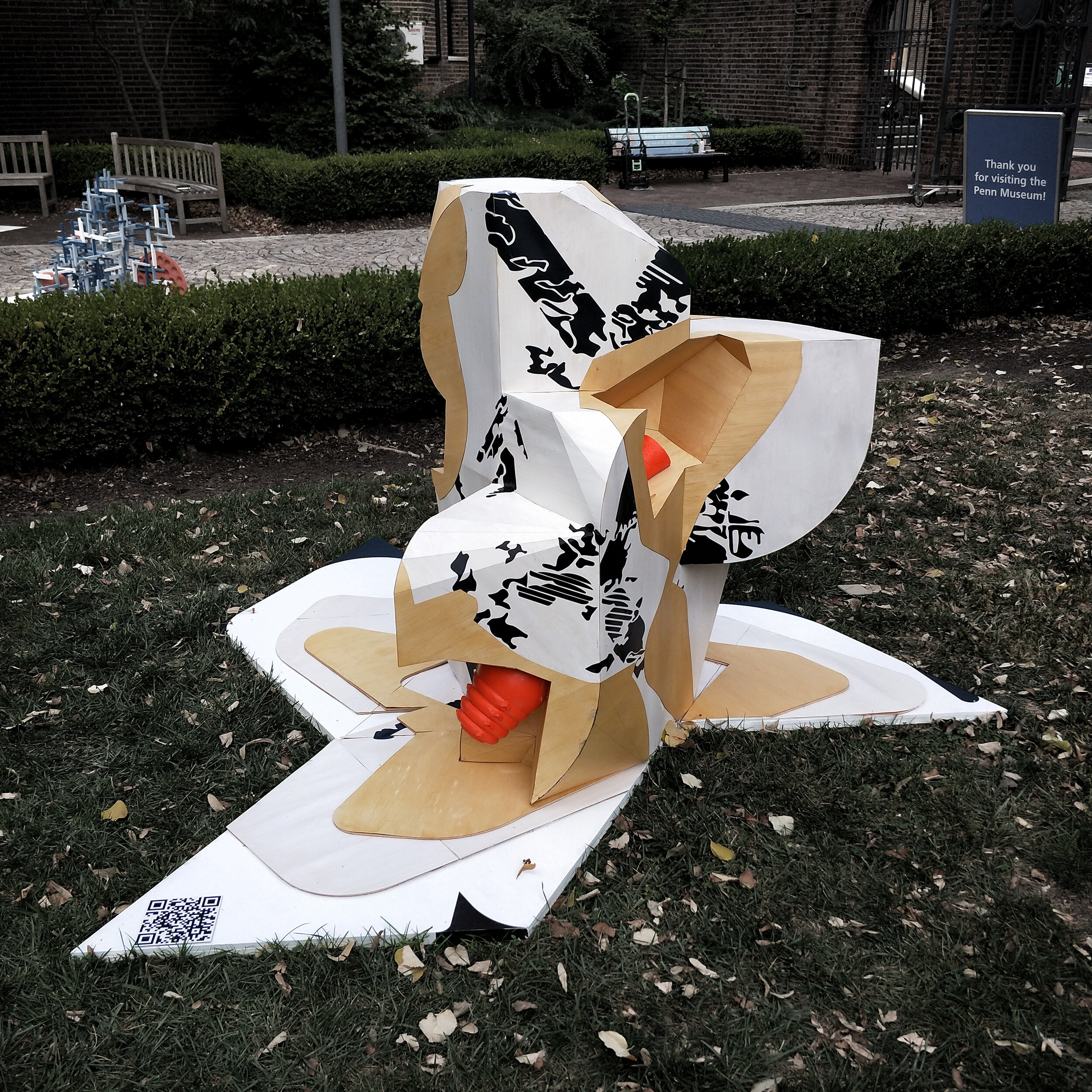Stratigraphic Vestige
CRITIC
Andrew Saunders
TEAM
Benjamin Hergert, Shiyue Liu, Yifan Shi, Madison Tousaw
The derivation of the Stratigraphic Vestige arrives from a synthesis of the concepts of Stratigraphy, the analysis of the order and position of layers of archaeological remains, and the Vestige, a trace of something that is disappearing or no longer exists. Taking an archaeological approach, the cabinet becomes a series of Excavations to reveal the Artifacts within. These Artifacts are the primary signals by which a series of relays has deformed the original, manifesting in the classifications of the following: the Strong Figures of the massing, the Excavations unearthing the Artifacts, the projecting Collars of the Excavations, and the Patina extracted from the Artifacts. These operators each develop agency referencing Kubler’s The Shape of Time, acting as a painter, “who in his search for the identity of the subject, must discover a patterned set of properties that will elicit recognition all while conveying a new perception of the subject.” The Artifact serves as the initial source through which the translations of each relay occurs, channeling the layers of vestiges. This propels into the projection of the ground to cabinet, as the materiality moves from the digital to the analog expressed through veneer. Treated as a discovery of archaeological remains, the Artifacts perform a vestige of themselves as they are defamiliarized of their function and orientation.
The Excavations have become a gateway into the understanding of a new reading, digging into the cabinet as a reveal. This new perception is founded upon deformations that continually eat away at the original while forming Strata layers of their own self-signals, creating a juxtaposition of real surface and deep illusion. A series of projected Collars serve as disruptors, defining a new form of defamiliarization through slippages that cross original boundaries and seams while reinterpreting the Strong Figures. The Collar manifests across surfaces and dimension, defining the relationship with the ground as an unbound entity while obscuring the Strong Figures of the massing. They transcend both an idea of massing and an idea of pattern, creating a hybrid reading as partial shells that contaminate the mass as they spill from the Excavations and reinterpret their own Strong Figures. The Patina bypasses the bounding of the massing as it uses the unrolled 2D surfaces to then become re-rolled as an agent of flattening. Deriving its figure from the texture of combined Artifacts, the Patina has focused its signal as an expression of the micro scale, emphasizing a familiarity of the original source while defamiliarizing the physical massing as it ignores seams and surfaces of the veneer, and instead becomes projection that is void of the veneer materiality.
CONCEPT
INITIAL STUDY: Containers for Artifacts with New Patinas
FABRICATION
DRAWINGS
As each Artifact is combined, the Strong Figures are synthesized, developing as a Collapsed Drawing that forms the basis of the ground condition.
IN SITE

